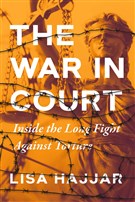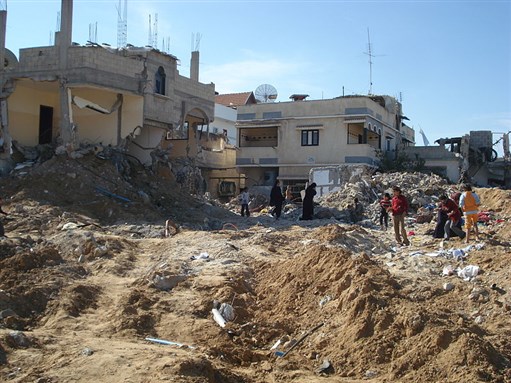The CIA operates armed drones to engage in targeted killing operations in Pakistan, Yemen, and Somalia. That is known. But, to borrow from former Secretary of Defense Donald Rumsfeld’s iconic statement, is it a “known known” or a “known unknown”? Known knowns are things we know we know, whereas known unknowns are things we know we do not know. The third ingredient of Rumsfeld’s rhetorical mélange is the “unknown unknowns”—things we do not know we do not know. The CIA wishes its drone program was an unknown unknown. It strived for years to keep this public secret protected by offering “neither confirm nor deny” responses to journalists’ queries.
This non-response is standard CIA practice because every clandestine program and covert operation—including their very existence—is an official secret, protected by heavy classification. The neither-confirm-nor-deny non-responses to questions about the targeted killing program aimed to obscure (and provide deniability) that the CIA, a civilian agency, operated armed drones and conducted lethal strikes. (The Joint Special Operations Command, a unit of the military, runs a separate targeted killing program.) However, CIA secrecy and deniability were undermined by President Barack Obama and other officials—including CIA directors—when they made public statements after “successful” strikes to claim the casualties as victories in the ongoing “war on terror.”
If the CIA’s drone program is a known, how—and why—is it also an unknown? An answer to this question can be found in the 18 June 2015 ruling by the District Court for the District of Columbia (Washington) in American Civil Liberties Union et al v. Central Intelligence Agency. The ACLU has been a leading force in trying to uncover information about US counter-terrorism operations in the “war on terror.” The justification is that the public has a right to know what the government is doing and whether these doings comport with the US Constitution and other laws. The Freedom of Information Act (FOIA) provides the means by which the ACLU has sought information—about interrogation and detention operations, warrantless spying, and targeted killing—and then sued the government or its particular agencies in court when such information has not been forthcoming.
Fighting Secret Wars
The roots of this particular case trace back to the ACLU’s 2010 FOIA request for all CIA records pertaining to the use of drones to kill alleged Islamist terrorists overseas. They sought information about the program’s legal basis; how targets are selected; civilian casualties; ex post facto intelligence assessments of individual strikes; the geographical limits of drone warfare; the number of strikes and the location of each; the identity, status and affiliation of each person who was targeted and killed; who is authorized to pilot and fire drones; and how those drone operators are trained and supervised within a larger chain-of-command.
The CIA responded to the ACLU’s FOIA request by refusing to confirm or deny the existence of such records (this is called a Glomar response), citing the specific FOIA exemptions that allow the agency to keep its secrets secret. These FOIA exemptions are enshrined in the CIA Act of 1949 as amended; they aim to prevent courts from mandating the declassification and release of information that, according to the CIA’s own assessment, would expose “intelligence sources and methods,” and would or could damage national security and foreign relations.
In 2011, the District Court ruled in favor of the CIA. But after the flurry of public statements by officials about the efficacy of drone strikes and the legality of targeted killing, the ACLU launched an appeal. They argued that the public statements acknowledging the CIA’s role in targeted killing had made the program public. The DC Circuit was persuaded that the statements had altered the situation, and ordered the CIA to start the FOIA process anew.
The ACLU narrowed its request to two categories of information: all final legal memoranda, and all records compiled by the CIA for analytical purposes to show the identity of the intended targets, the numbers and identities of people killed (if known), and the date and location of each strike. In response, the CIA acknowledged the existence of twelve secret legal memoranda and thousands of classified intelligence reports relevant to the request for information. The CIA released a redacted version of one legal memo—a Department of Justice “White Paper” that summarized another memo setting out the legal authority for the president to order the killing of a US citizen in Yemen, Anwar al-Awlaki; he was killed by a drone strike in September 2011. But the CIA withheld everything else, citing its FOIA exemptions. Then, in order to close the case, on 25 November 2014, the CIA filed a motion for a summary judgment. The ACLU filed a cross-motion for a summary judgment, arguing that the CIA had improperly withheld information that has already been officially disclosed and had not justified why these materials would fall within its FOIA exemptions.
How To Not Know
Judge Rosemary Collyer’s ruling in ACLU v CIA—which the ACLU lost—helps us understand how the CIA’s targeted killing program remains an unknown. The CIA asserted that the release of substantive information about its drone program would be detrimental to national security and foreign relations, and therefore was properly protected. Judge Collyer did not find any basis “to limit customary deference.” This “custom” of deference contributes to a politics of ignorance. According to Scott Horton, author of Lords of Secrecy,
Today Americans know less about what their national security forces are doing than ever before. And Americans frequently know less than citizens of other nations. The consequence of this information blackout is that Americans also have less effective say about what their country does and what strategies and objectives it pursues. Decision-making authority has passed from the American people, the ultimate sovereign, and the Congress, the organ of oversight and balance, to the president and his unelected and essentially unaccountable advisers in the national security arena—the lords of secrecy.
The ACLU was seeking information and facts about a program that has become the cornerstone of the “war on terror.” Judge Collyer, quoting from CIA notices and declarations to the Court, opines that the release of this information
would be “sufficient to show the identity of the intended targets, assessed number of people killed, dates, status of those killed, agencies involved, the location of each strike, and the identities of those killed if known.”… The Court has no doubt that this kind of detail would reveal intelligence activities, sources, and methods and is properly protected…
In other words, the public has no right to know what it does not know.
What about all those public statements by officials about the wondrousness of the drone program? Here, we get a lesson in the distinction between knowledge and acknowledgment. According to Judge Collyer, the public statements cited by the ACLU “plainly do not ‘match’ the specific information ACLU requested about drone strikes and are insufficient as a matter of fact and law to compel disclosure of any of the withheld intelligence products.” The government officials’ statements did not disclose—and thus acknowledge—how the CIA kills people with drones, and therefore, that information cannot be leveraged into the open through a FOIA process.
This secrecy applies even to the legal memoranda, despite the numerous statements and speeches by officials that the program is legal. Judge Collyer “concludes that ACLU has not met its burden to show that there has been official acknowledgment of any of the withheld legal memoranda …and the Court declines to review them in camera.” In other words, the Court lends its weight to the politics enforced ignorance, and is satisfied with the only thing on offer from the government, which is to “just trust us.”
Reading between the Lines
What is not on the table in this case are any of the larger controversies surrounding targeted killing. These include the fact that the practice bears no resemblance to “combat”—although it is presented as a method of war—but rather manifests as a unilateral delivery of violence and death by remote control. Another is the fundamental problem that a civilian agency has been authorized to engage in armed conflict. One controversy that is germane to this FOIA case is the matter of civilian casualties (i.e., “collateral damage”) caused by drone strikes—information sought by the ACLU. However, Judge Collyer’s ruling does not engage the controversy or even suggest that she is aware of publicly available empirical evidence that contradicts the government’s repeated claims of “low or no civilian casualties.” Rather, several sentences into the “facts” section she parrots drone enthusiasts’ spin: “One of the recently-used weapons by the United States is an unmanned drone, which can deliver a missile strike against an enemy target with greater precision and less risk to innocent humans than a traditional bomb” (emphasis added).
If the Court had impelled the CIA to release intelligence reports about strikes, it would be possible for the public to know (or at least know better) whether there is any accuracy to this putative “fact.” But there is a deeper analytical obfuscation in Judge Collyer’s assertion that drone strikes are exceptionally precise and therefore pose less risk to “innocent humans” than would result from attacks by different—less precise—weapons. The implication is that “drones save lives.” This reasoning falls apart when one considers that armed drones are used for targeted assassinations, not full-scale military campaigns. Even in this case, one can ask: more precise than what? The kill- and wound-radius of bombs launched from drones are fifteen and twenty meters respectively, so anyone in range would be killed or wounded. By comparison, the lethal radius of a grenade is three meters—but killing by grenades cannot be done covertly or by remote control.
The inherent imprecision of targeted killing by drones is the faulty discrimination in the choice of targets and the analytically weak foundations of kill lists. The lethal precision of a weapon cannot compensate or substitute for the muddle of network-analysis employed by the CIA for target selection. Sometimes targets are specific individuals whose identities are known; bombing them is termed “personality strikes.” But more often assessment of who and where to bomb derives from drone-surveilled and operator-observed behavior—specifically, “patterns of life” and those behaviors that are interpreted to be anomalous and thus deemed actually or potentially threatening. The bombings of people whose identities are not known but who are deemed to be behaving suspiciously are termed “signature strikes.
Ignorance as Irony
In Yemen in mid-June 2015, the CIA killed Nasir al-Wuhayshi, alleged to be a top leader of al-Qaeda in the Arabian Peninsula. According to some anonymous sources who spoke with Bloomberg journalists Eli Lake and Josh Rogin, he had been methodically tracked for months through precise electronic surveillance. These sources claimed that his killing was a personality strike. Meanwhile, according to other anonymous sources who spoke with Washington Post journalist Greg Miller, al-Wuhayshi was not killed because he was being methodically tracked; rather he was killed in a signature strike made possible by the fact that the Obama administration recently had eased certain drone-strike guidelines for the CIA to operate in Yemen.
Jameel Jaffer, the ACLU’s Deputy Legal Director, and Brett Max Kaufman of New York University’s School of Law (and formerly an ACLU legal fellow), address these conflicting accounts in an article titled, “The CIA Can’t Keep Its Drone Propaganda Straight.” They write:
One faction immediately tries to capitalize on the al-Wuhayshi strike as evidence of the CIA’s other-worldly tracking abilities, even in the fog of a confusing and fraught war in Yemen. At the same time, another faction exploits the same strike to make a public case for expanding the use of a controversial targeting technique [i.e., signature strikes] that the Obama administration earlier said, in an effort to assuage public concerns about the lawfulness of the drone program, it would retire.
According to Jaffer and Kaufman, the competing versions of this story
serve as another reminder — in case any were needed — that the statements of anonymous intelligence officials are often efforts to mislead and manipulate, and that much of the “information” the government has provided the public about the drone program is merely propaganda.
The irony is that these two conflicting accounts from the same agency came out the same week that the Court issued its ruling in ACLU v CIA. Judge Collyer ruled that she was—and the public, as represented by the ACLU, should be—satisfied with a politics of “just trust us.” Jaffer (in personal correspondence) characterized the ruling as “disappointing and dangerous” because the Court “effectively leaves it to the CIA to decide what information the public should have about the CIA`s drone program, including, for example, whether the public should know anything about civilian casualties.” FOIA was meant to make government agencies more accountable to the public. But as Jaffer notes, “This decision does the opposite.”
With the help of the Court, the CIA retains its lock grip on what can and cannot be known about its targeted killing program. Sometimes, as the conflicting anonymously-sourced stories about al-Wuhayshi demonstrate, the CIA might not even know what it knows.
![[Drone during a storm. Image: Jared Rodriguez / t r u t h o u t; Adapted: jeditrilobite, david.evenson.]](https://kms.jadaliyya.com/Images/357x383xo/4345928353_c287120d39.jpg)

















